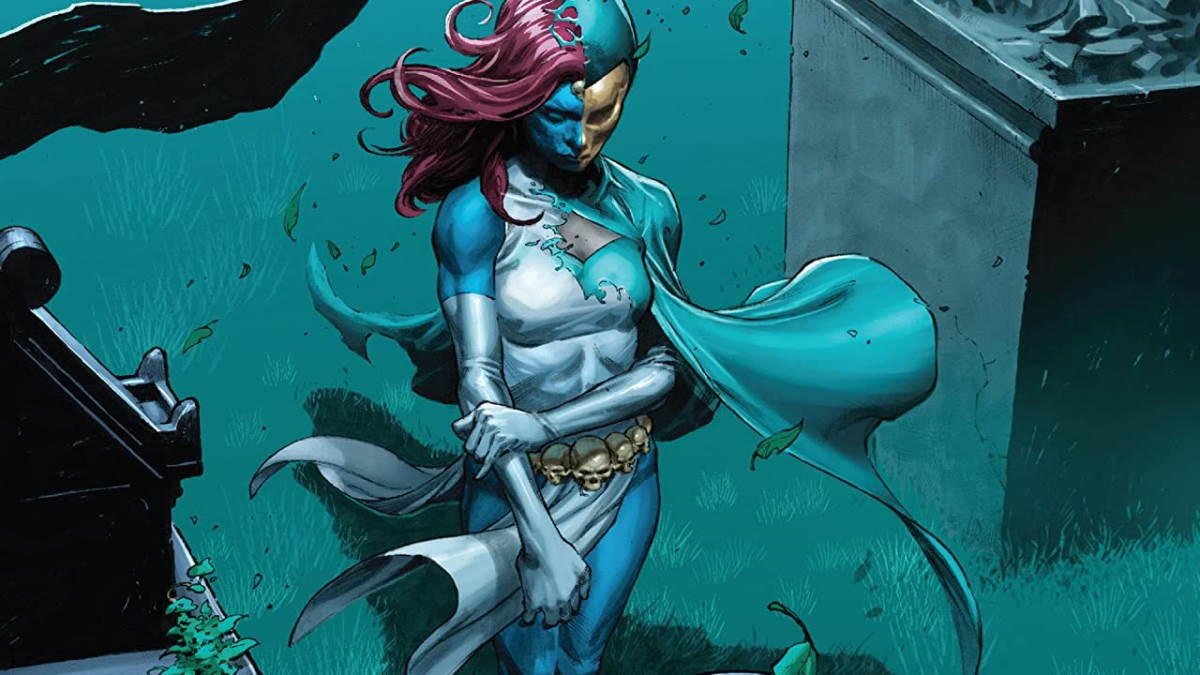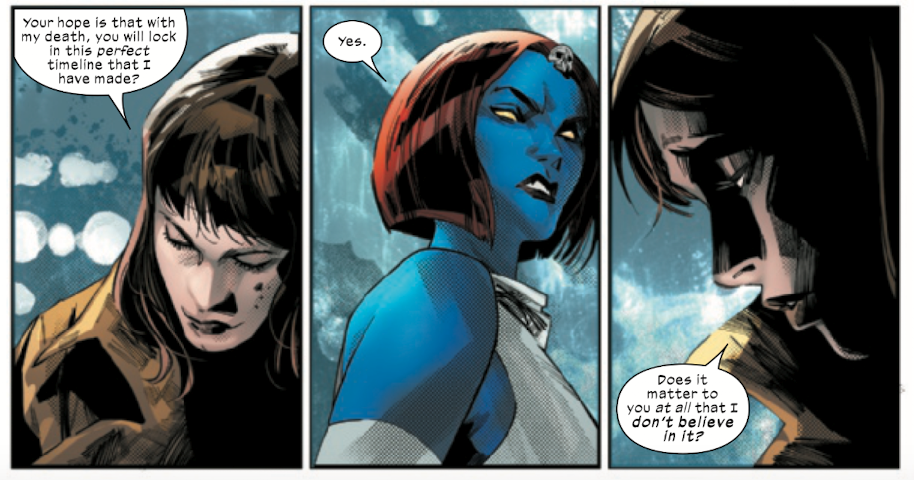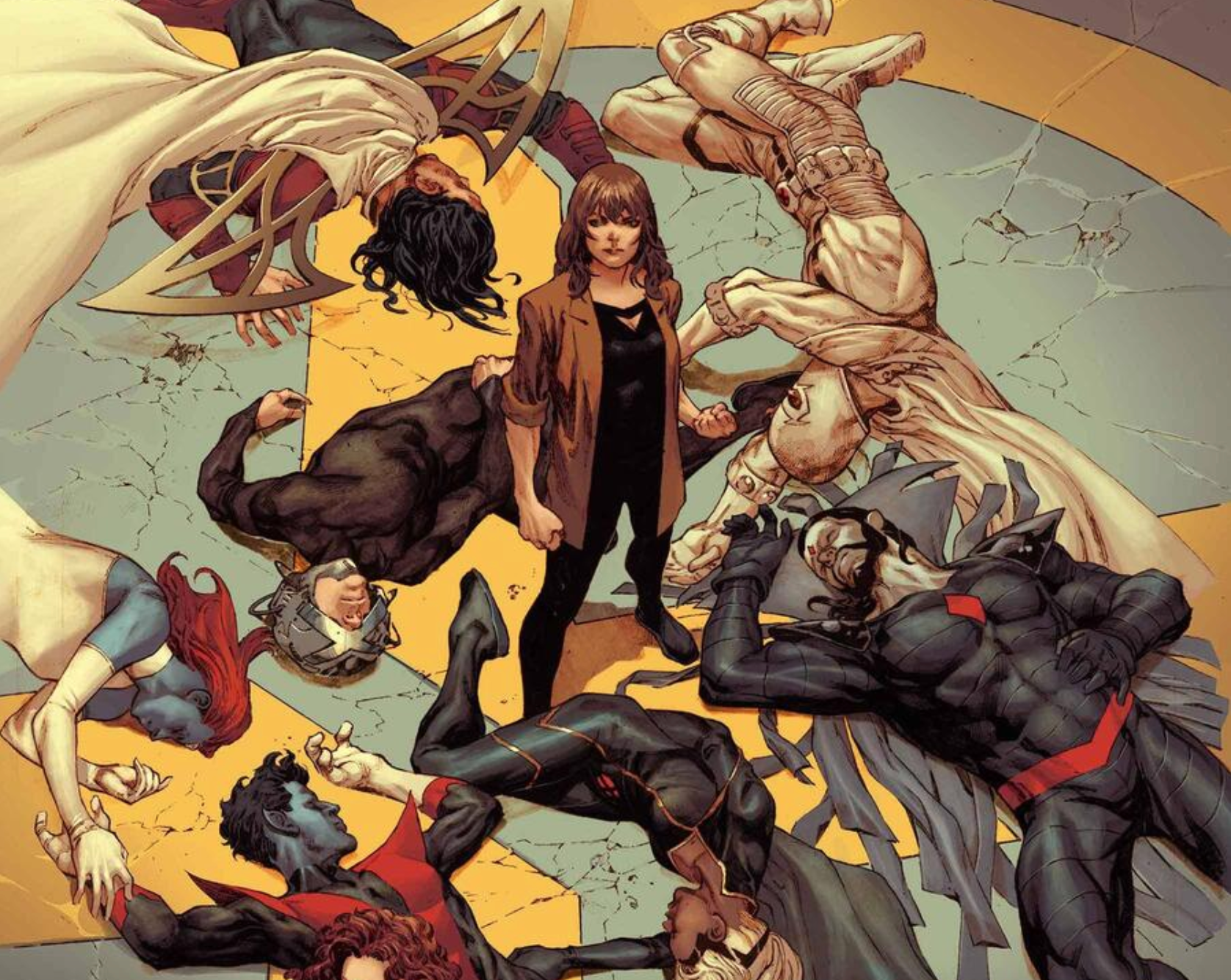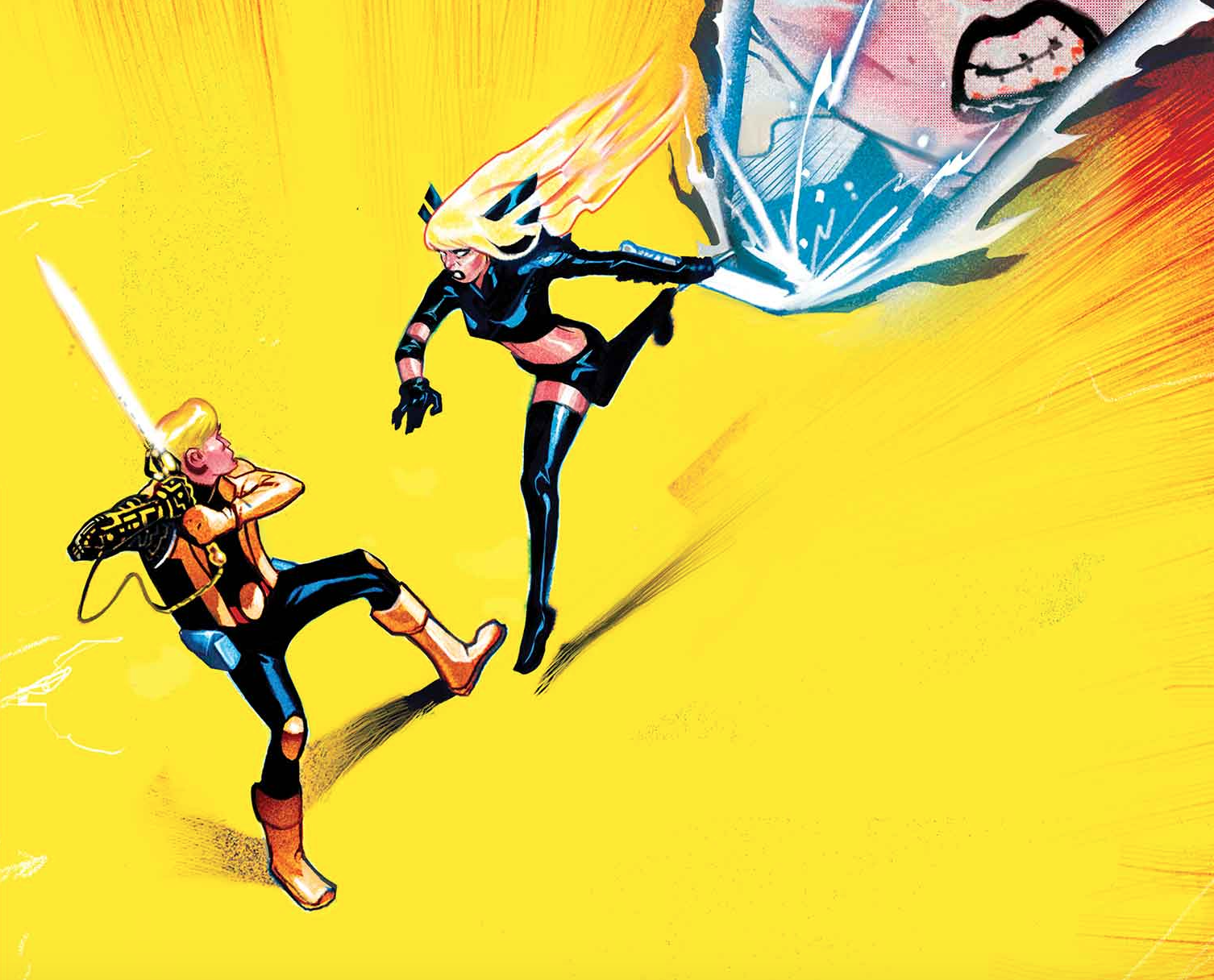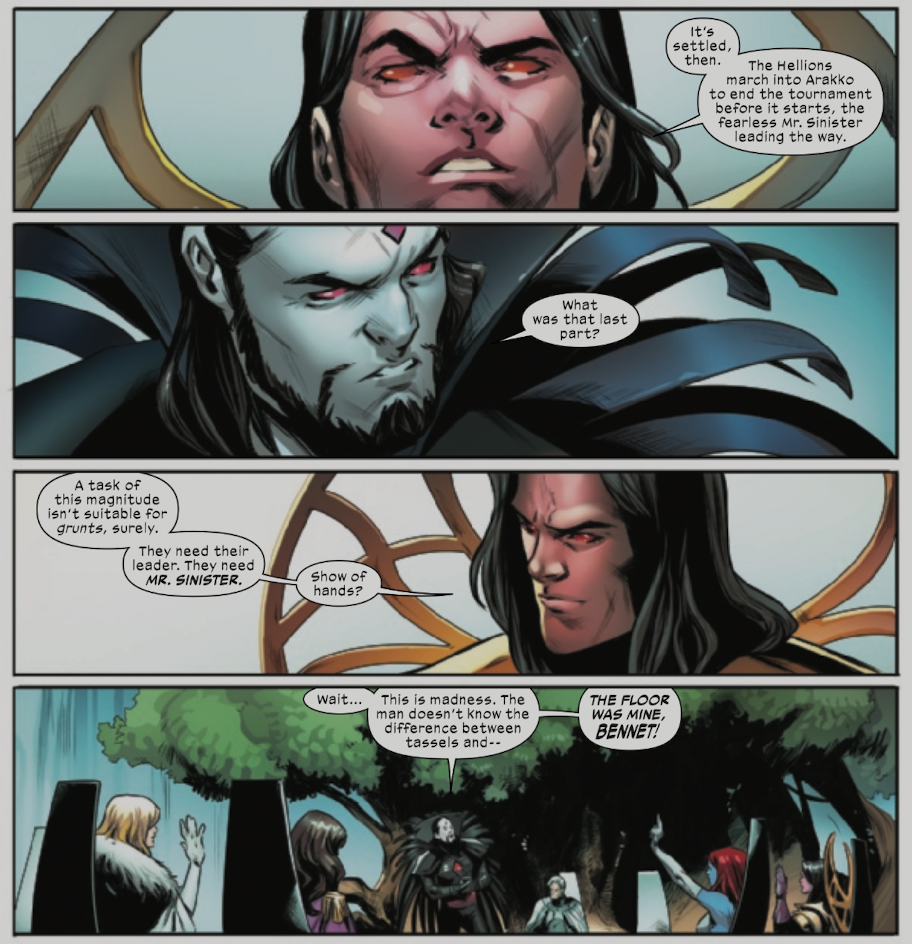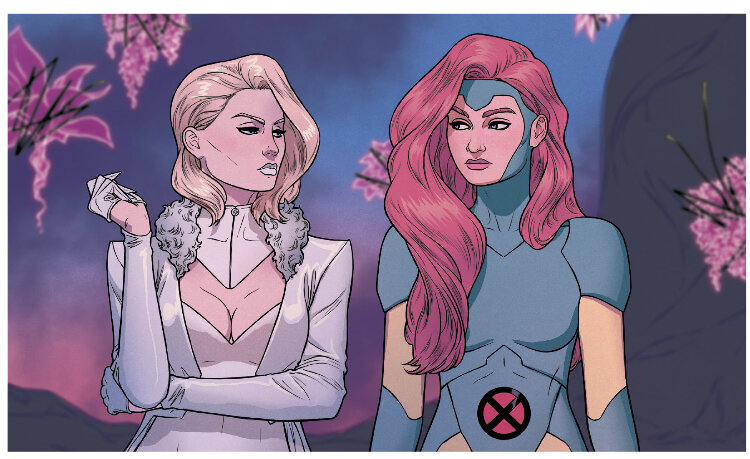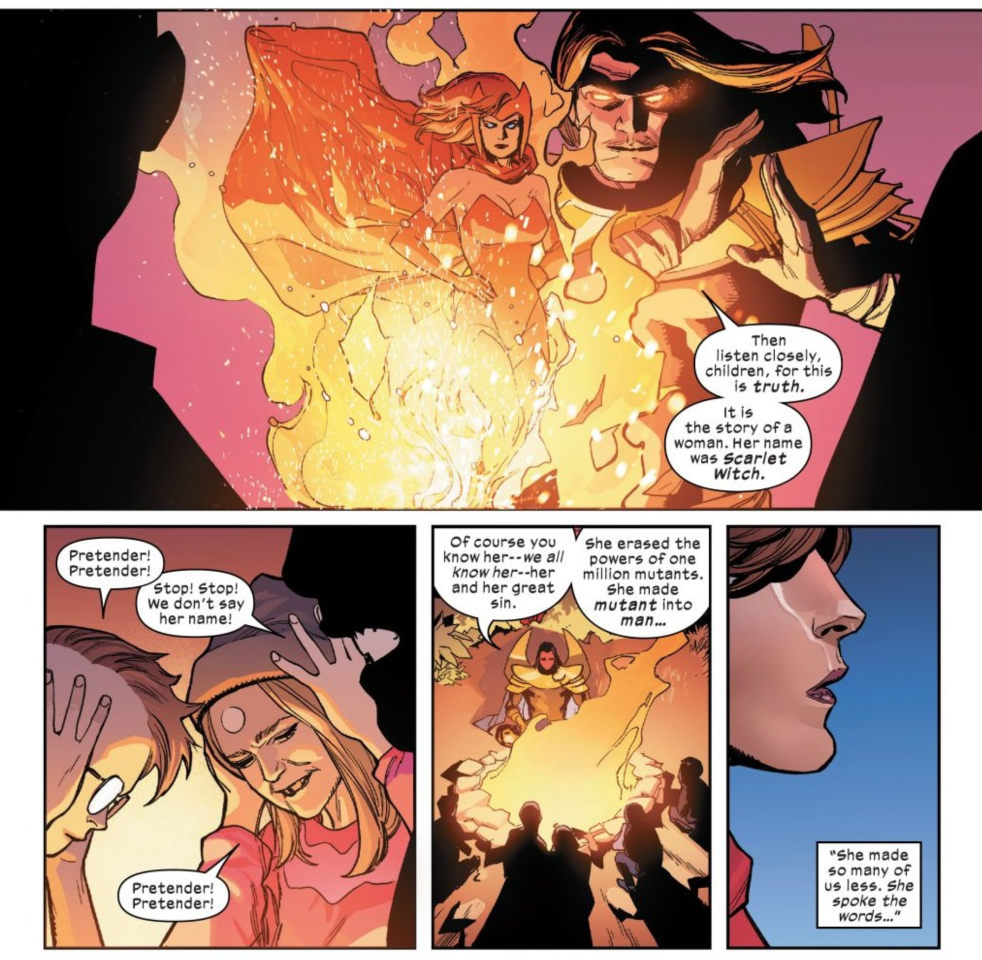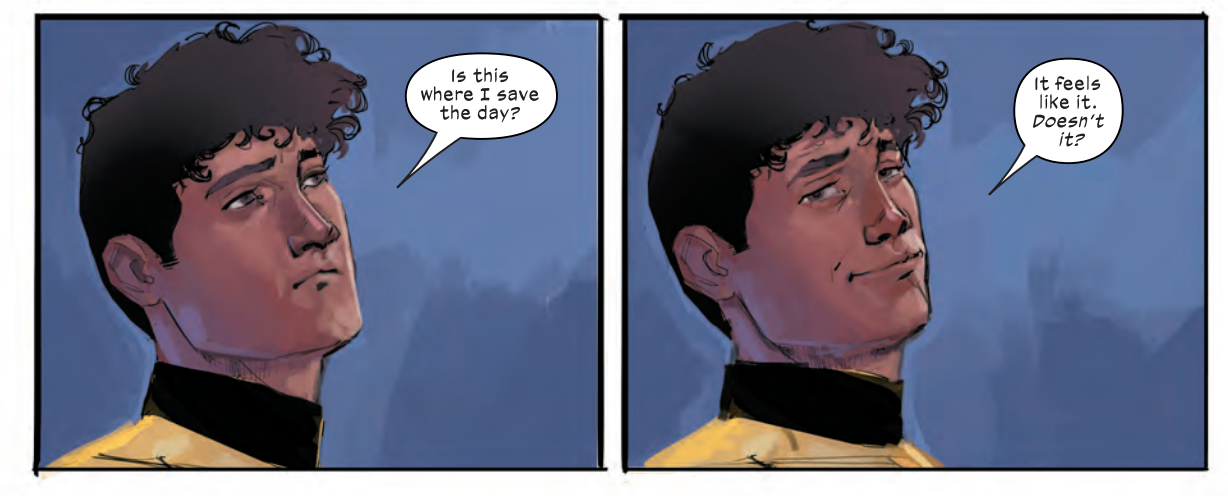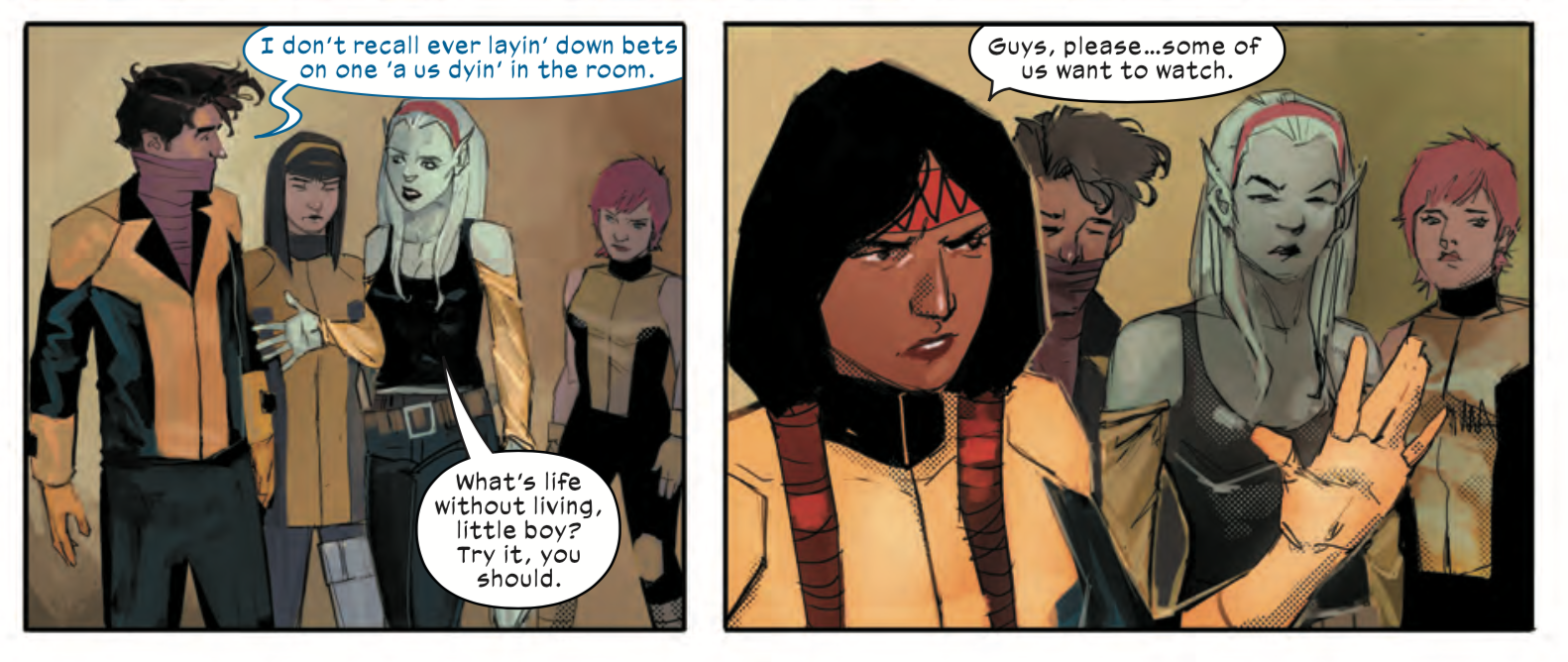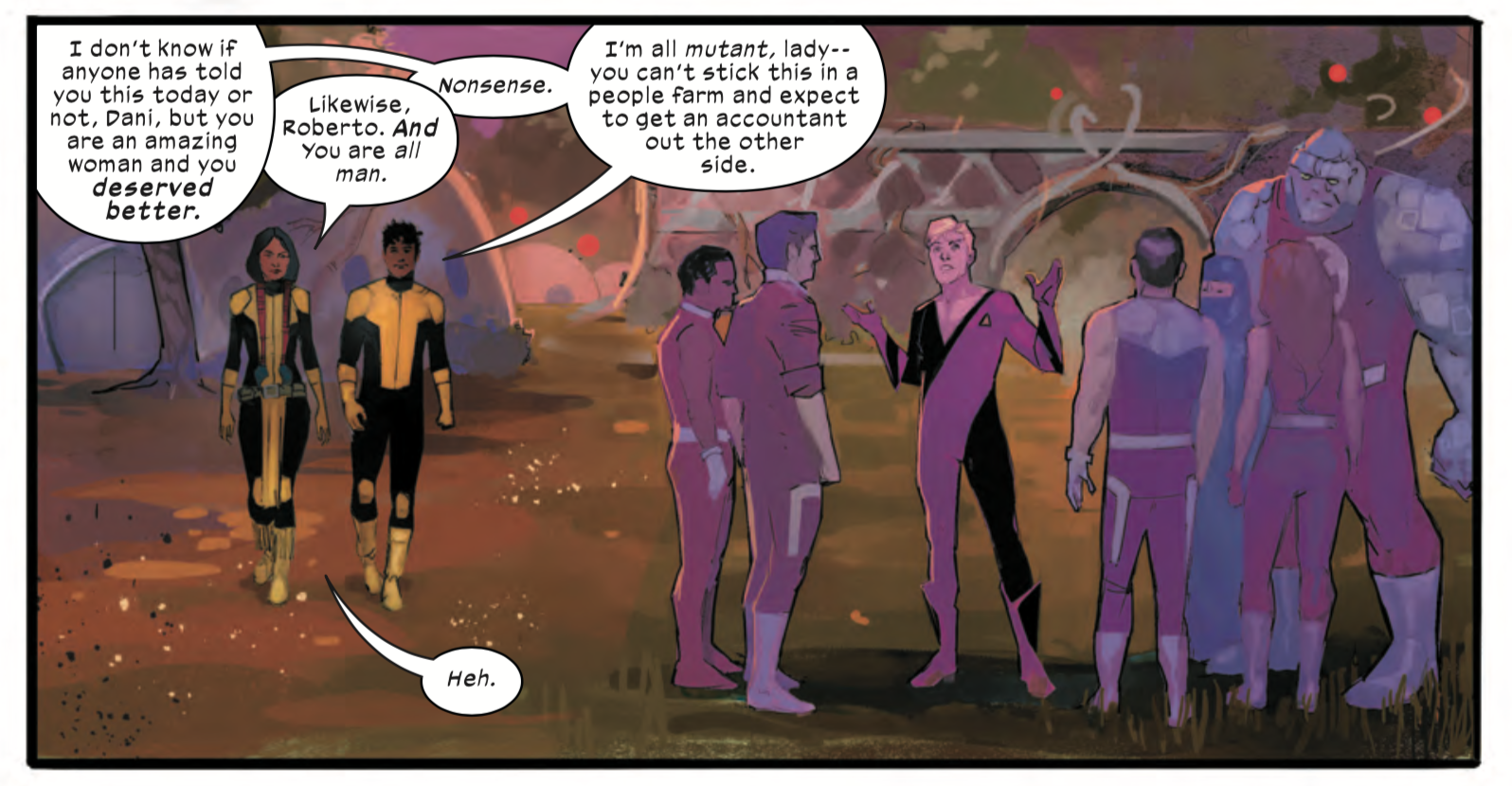The Death of Moira X
Inferno #4
Written by Jonathan Hickman
Art by Valerio Schiti with Stefano Caselli
Color art by David Curiel
Jonathan Hickman’s story ends here, and it feels like a proper conclusion even if he’s acknowledged in interviews that he’s not accustomed to leaving before getting to his planned ending. (I suppose he just kinda forgot about The Black Monday Murders and The Dying and the Dead when he said this, both of which stalled out indefinitely due to complications in the lives of their respective artists.) Inferno works because it pulls together the central threads of his run – the founding of Krakoa, the emergence of Orchis, and the fraught Moira/Destiny/Mystique situation – rather than gesture towards what could have been. The big status quo shifts of the second and third acts of this epic he had in mind may yet come to pass with other writers, or he could always come back around to writing them himself at some point. But whatever comes down the line is another thing altogether, as this issue provides a satisfying finale to the narrative he started in House of X. You could reasonably stop reading X-Men here, though the promo line at the end is apt: “To be continued, forever.”
• “I see ten lives, Moira. Maybe eleven if you make the right choice at the end… but that is all.”
Now we know why this is, as Mystique blasts Moira with the same gun designed by Forge that stripped Storm of her powers back in the original Claremont era. Mystique does this so she can kill Moira with impunity, but it’s clear enough that Emma Frost gave her this weapon to address her own existential concerns. Moira gets to be a human, as she longed for in her earlier lives, and everyone gets to rest easy knowing that one woman’s death wouldn’t mean wiping out all existence. The looming threat hanging over Hickman’s story is disarmed, while setting up Moira as a wild card for future stories. And to add insult to Moira’s injury of ensured mortality, she’s had one of her arms replaced with living technology, merging her with the very thing she’d been fearing all along.
It’s easy to understand Mystique and Destiny’s motives and Emma Frost’s resentment of Moira’s power, and even Cypher’s disgust for Moira’s self-serving anxieties. But it’s harder to get why no one seems willing to give Moira the proper credit for being the entire reason they have a Krakoan nation and the miracle of resurrection. Moira is essentially punished for the crime of attempting to preserve this thing everyone is so invested in, albeit with zero transparency and a hidden desire to finally snuff out the conflict of mutants, humans, and machines by “curing” the mutants. But as sad as this is for Moira, it’s yet another thing she can learn from, and the young mutant nation can move ahead without its secret extremely neurotic and negative puppet master. On a metatextual level, the same character who had ushered in the new era of X-Men had held on too much of the dark anxieties driving the old comics, and had to be taken out so the new way could flourish.
And hey, even if Moira dies at some point there’s really nothing preventing her from being resurrected with her powers intact, just like all the depowered mutants made whole in the Crucible ritual. There’s just no getting around the value of her accrued knowledge.
• The long-awaited confrontation of Moira, Mystique, and Destiny plays out in the same nine panel grid structure that Pepe Larraz used in House of X #2 and Valerio Schiti used again reprising that scene earlier in Inferno. Just as in that scene set in Moira’s third life, she’s captive and passive as Mystique and Destiny stand before her – the former glowering and aggressive, the latter still and inscrutable behind her metal mask. You watch Moira cycle through emotions – denial, defiance, bargaining, depression, acceptance – and we see that history has simply repeated. Despite any expectations we had going into this scene, it’s Mystique and Destiny confronting Moira about her desire to “cure” mutants.
• The cycle breaks upon the arrival of Cypher, who has been keeping tabs on the situation and intervenes. Cypher, the best good boy of Hickman’s story, the mutant master of language who stops violence with rational communication. Cypher wins with logic and negotiation – Mystique would be murdering a human, and she would be exiled and Destiny would be removed from power. By stepping away the two of them can remain on the council and gradually consolidate power, as he does as well. Mystique is frustrated, but Cypher reminds her – you just got exactly what you wanted. And he’s right, since Inferno is basically a story about Mystique winning and becoming even more powerful, except for not getting to murder someone she had already tortured and made human.
• By the way, this is my favorite panel in this issue. It’s the very definition of hypocrisy.
• The confrontation of Magneto and Xavier with Omega Sentinel and Nimrod turns out to be much more bleak, but of course how could it not be? The machines show themselves for who they are – so indifferent to the humans that they murder them to get them out of the way, and announcing to the leaders of mutantdom that they are their true enemy. Of course this is hardly news to Magneto and Xavier thanks to Moira, so it doesn’t really matter that they end up getting killed and resurrected without memory of this battle. But it’s interesting to see how the machines believe they’re a step ahead of the mutants, but are in fact several steps behind. They don’t know about mutant resurrection, and when Nimrod destroys Xavier’s Cerebro helmet, it has no clue what the actual function of that device is. This is wonderfully ironic as the technology behind Cerebro was reversed engineered from the Nimrod of Moira’s sixth life creating the archive of mutant psyches.
• Before Hickman launched House of X/Powers of X there was a cryptic Marvel house ad teasing the run with these words on a white background – “When two aggressive species share the same environment, evolution demands adaptation or dominance.” And here at the end of his story we see exactly what this means as the two aggressive species – mutants and artificial intelligence – are at war with the exact same motivations. Omega Sentinel, driven by her experiences in a future where the mutants win, echoes Cyclops’ defiant words from House of X #1: “Did you honestly think we were going to sit around forever and just take it?” We side with the mutants, we know they’re the heroes of this story. When Cyclops says this it’s an inspiring moment, and when Omega says it it’s a menacing threat. But through all of this, are the mutants any less ruthless? Are the mutants not incredibly bold in what they claim for themselves, down to terraforming the neighboring planet and declaring it the capitol of the solar system?
For many years the human antagonists of the X-Men were psychopathic hate mongers, and the Sentinels were just their weapons. It was very narratively flat. But at the end of Hickman’s story we have machines with the same desires to both survive and thrive as the mutants, and the humans of Orchis are motivated by traumas inflicted on them by mutants and an understandable threat of mutants as an aggressive and arrogant species. Of the many gifts Hickman gave to the X-Men franchise, this is one of the most crucial, and one most likely to become central to all subsequent adaptations.
• I was a bit confused by Xavier causing a huge telekinetic blast after Nimrod crushed Cerebro, given that the character is known to only be a telepath. But I remember early on in Powers of X there was another scene in which Xavier appeared to be using telekinesis, though that could have been explained as Magneto using his powers to drift a USB stick to his hands. I have two No Prize-worthy explanations for this – first, it could be that all powerful telepaths have potential for telekinesis and it came out in a moment of extreme duress. Second, it could be that Xavier had telekinesis added to his powers in genetic modification of his body before resurrection so that he could have a defensive power in the mix.
• We never see Xavier and Magneto learn of what happened with Moira, but I suppose that’s just a story for another day. Or maybe more like two weeks from now, as locating and protecting Moira seems to be central to the plot of Benjamin Percy’s X Lives and X Deaths of Wolverine event.
• There’s a nice bit of continuity juggling with Forge’s de-powering gun here. Mystique references a conversation she had with Forge about it in X-Men #20, a scene that felt a bit navel-gazing and tossed-off at first but is now a major bit of foreshadowing. Emma Frost has a copy of the gun thanks to a story in Marauders which also felt vaguely unnecessary at the time, but now seems like it was probably deliberately coordinated with Gerry Duggan.
• The final scene with the Quiet Council illustrated by Stefano Caselli is a sentimental farewell to the characters, but also serves a metatextual acknowledgment of what Hickman accomplished with his X-Men run. Something incredible was built, something meant to last a long time. And it will, as the story is passed on to Kieron Gillen, Al Ewing, Gerry Duggan, and Benjamin Percy in the months to come. The story doesn’t really end and that’s a triumph for Hickman, a writer who knows how often narratives are rolled back to a status quo after a writer leaves a corporate comic series. Like Moira and Mystique he’s gotten exactly what he wanted, but it’s still bittersweet. There’s always something else beyond what you want and what you need. This is why it’s good that it’s obvious that of all the characters he used Cypher as his proxy, the guy who ends up quite happy with what he’s built and what he’s gained.
